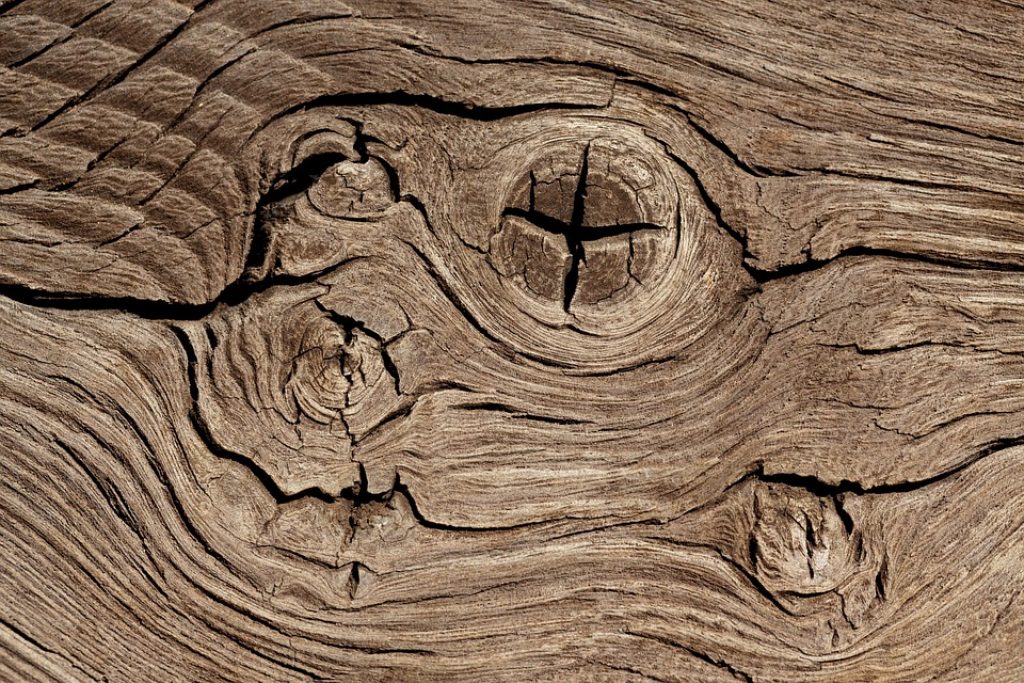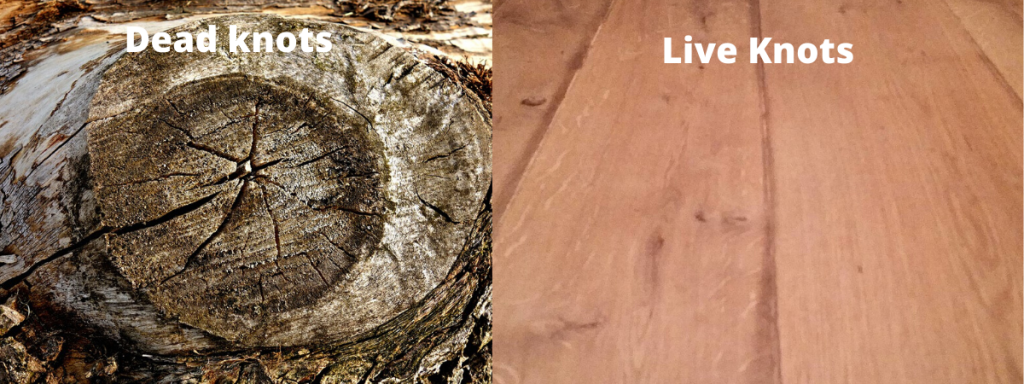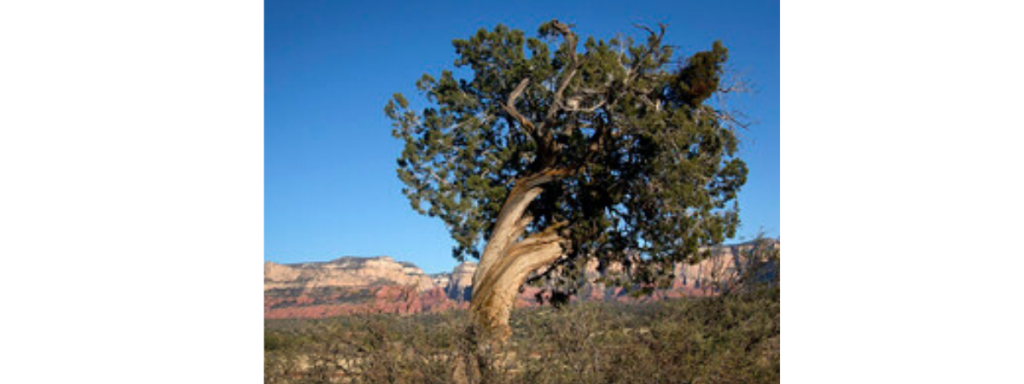Timber/Wood is a natural product with some imperfections of each natural product. The woods are not excluded. Most timber defects lead to weakness or other problems. Nevertheless, such flaws could be helpful to a certain kind of function, such as bentwood for a wooden bowl.

The Results are the Five Main Types of Timber Defects:
- Defects due to Natural Forces
- Defects due to Attack by Insects
- Defects due to Fungi
- Defects due to Defective Seasoning
- Defects due to Defective Conversion
These wood defects are discussed briefly below.
Table of Contents
Timber Defects Caused by Natural Forces
Knots: Knots are the most common natural forces defects. Branches near the earth or lower branches are dying when a tree is growing. The roots of these branches remain in the trees as the trees grow. These foundations may produce knots known as imperfections. Read More
Knots types: two types of knots.
Dead knots: Upon drying out, the remains of broken branches become loose and fall out.
Live knots: they’re solid and sound.
Live knots, because they remain firmly attached to the timber, are generally no problem. But they are loosely attached in dead knots and decrease strength. Knots decrease the wood’s strength and thus decrease the value of its structural use. Knots cause serious defects when the load is perpendicular to the grains.

Twist: Twist of wood in opposite directions rotates the tree ends. The main reason behind this flaw is that the strong wind shakes the branches.

Shakes: Shakes are wood defects occurring around a timber’s annual ring or growth ring. In other languages, shakes are considered cracks or breaks in the forests.
Based on scope and use, it may or may not be a structural issue. Aesthetics is the main problem. Shakes are unacceptable where the appearance is significant.
Shakes type: shakes can be divided into three major categories:
Star Shakes: This type of wave starts to spread through the lines of the medullar rays from bark to sapwood, and sometimes even to the heartwood. The cracks on the outer edge or bark are broader and on the inside are smaller. The main causes of star shakes are extreme heat or frost while the trees grow and quick or inconsistent seasoning after timber is cut. Extreme temperature difference results in extreme heat or frost which leads to crack shrinking
Cup and/or Ring Shakes: The cumulative ring development is accompanied by cup shakes. It can partially or completely separate the growth ring. The break is termed ring shakes when the annual circle is completely separated. Therefore, all ring shakes are cup shakes, but not all cup shakes. The main reason for this form of a crack is intense frost motion.
Heart Shakes: In contrast to star shakes, heart shakes spread across the medullary rays from the pit to the sapwood. This break was triggered by a deterioration of the interior of the wood.
Rind Galls: rind has an abnormal meaning of bark and gall. The bark of the trees is also called abnormal growth rind galls. Improper branch cutting causes this unusual growth. Wood is lacking in strength and desirable in construction from this portion of the wood.
Upsets: Upsets in different woods mean that the tree is twisted or broken. The main reason behind this form of defects is the excessive dropping of branches, a strong wind blowing in the tree’s early age.
Timber Defects Due to Insect Attack
Insects such as insects, termites, and sea boars, consume wood, make holes and undermine the wood’s power.
Beetles are small, in almost every sapwood, insects that make holes. The larvae create tunnels and convert wood into dust through the sapwood in all directions.
In the colony, Termites live. You eat and build tunnels very quickly in the woods. The action of termites could only be resisted by a few good kinds of wood.
Under salt water, aquatic boars are included. We usually make wooden tunnels for shelter or escape. These bugs are sensitive to all kinds of timber or soil.
Timber Defects Due to Fungal Attack
Stain: If fungi just live on sapwood, where the meat is processed, it produces a stain. Stain: Heartwood does not produce and is not harmed by such foodstuffs. Staining causes color but has no effect on wood toughness.
Decay: this kind of wood defect is responsible for wood-eating or wood destroying funguses. The structure of this type of fungi is broken down. We were influenced both by sapwood and heartwood. There is a significant reduction in strength.
For More Details: Civil engineering
Timber Defect Due to Faulty Seasoning
Severe wood defects were caused by a faulty seasoning system. The timber dries in front of the internal surface during the preparation of wood, stone or soil cover. Stress is induced by the narrowing gap. By controlling the shrinkage, stress is kept to a minimum in a perfect seasoning process. The following are some of the defects resulting from faulty reasoning:-
Cup: The curvature shaped in the timber’s transverse direction is called a cup
Check: The curvature shaped in the timber’s transverse direction is called a cup
Honey Combing: During the drying process or seasoning, the pressure is produced in the heartwood. Cracks are formed in the shape of a walnut structure for these stresses
Bow: The bow is named the curvature shaped in the direction of the timber distance.
Split: Split is a particular type of command which stretches from one side to the other.
Timber Flaws leading to Defective Transformation
System notches: this flaw is induced by the faulty gripping and dragging.
Imperfect Grain: Mismatch in harmony with the crop.
System Burnt: The main reason for this failure was overheating.
Boxed Heart: This term applies to the wood, which is sawn in such a manner that the pith or middle heart drops throughout its existence fully within the ground.
Miscut: This flaw was triggered by incorrect slicing or sawing of timber. Lack of sawing and carelessness is the main reason for mistaken cutting.
